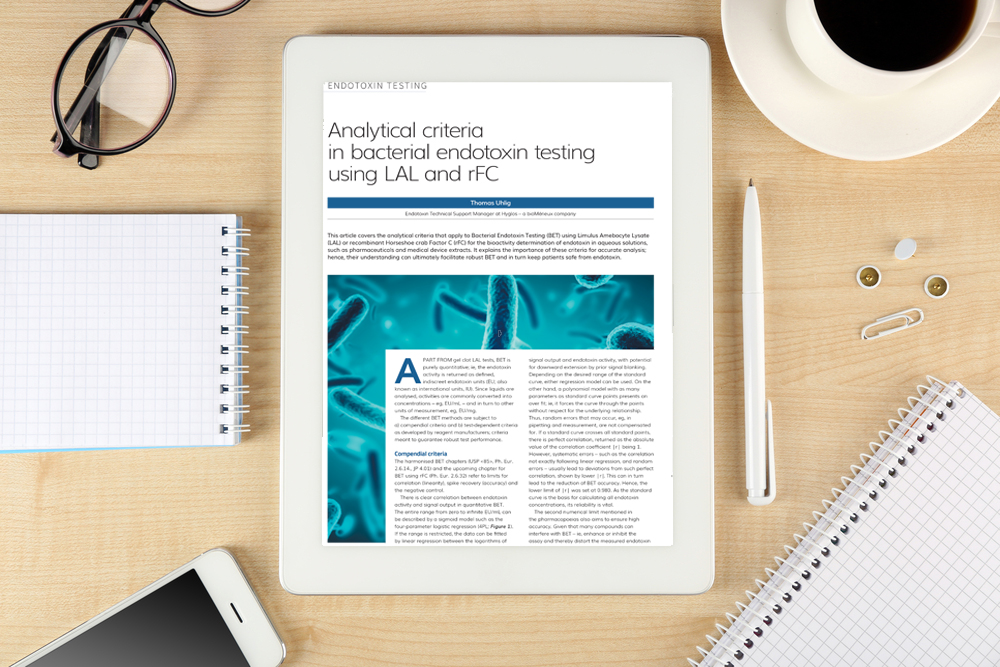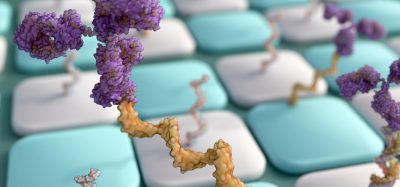Whitepaper: Analytical criteria in bacterial endotoxin testing using LAL and rFC
Posted: 21 February 2019 | Hyglos-bioMerieux | No comments yet
This article covers the analytical criteria that apply to Bacterial Endotoxin Testing (BET) using Limulus Amebocyte Lysate (LAL) or recombinant Horseshoe crab Factor C (rFC) for the bioactivity determination of endotoxin in aqueous solutions, such as pharmaceuticals and medical device extracts. It explains the importance of these criteria for accurate analysis; hence, their understanding can ultimately facilitate robust BET and in turn keep patients safe from endotoxin.
A part from gel clot LAL tests, BET is purely quantitative; ie, the endotoxin activity is returned as defined, indiscreet endotoxin units (EU; also known as international units, IU). Since liquids are analysed, activities are commonly converted into concentrations – eg, EU/mL – and in turn to other units of measurement, eg, EU/mg. The different BET methods are subject to a) compendial criteria and b) test-dependent criteria as developed by reagent manufacturers; criteria meant to guarantee robust test performance.
Related content from this organisation
Related topics
Active Pharmaceutical Ingredient (API), Analytical techniques, Anti-Cancer Therapeutics, Antibiotics, Big Pharma, Biologics, Biopharmaceuticals, Bioprocessing, Bioproduction, Biosimilars, Cell culture automation, Clinical Development, Clinical Trials, Contract Research Organisations (CROs), Drug Development, Drug Discovery, Drug Manufacturing, Drug Safety, Electrospray Ionisation (ESI) Mass Spectrometry, Endotoxin, Endotoxin Detection, Formulation, Microbial Biological Manufacturing, Microbial Detection, Microbiology, Nano particles, Nanoparticles, New Drug Application (NDA), rapid endotoxin testing, Rapid Microbiological Methods (RMMs), Research & Development (R&D)










